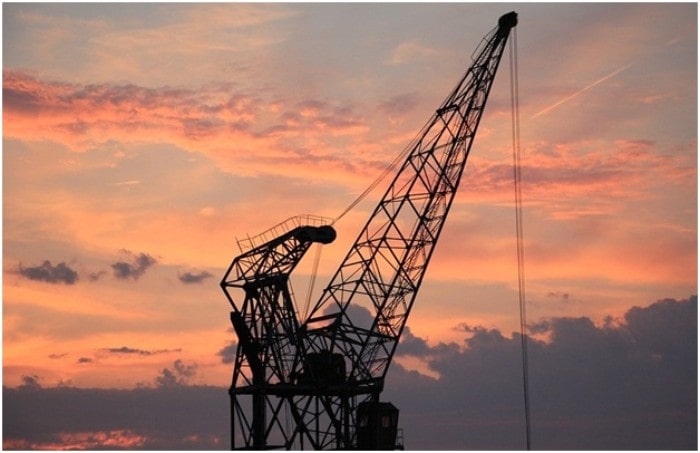
Crane accidents are deadly and usually affect more than one person! Since cranes lift heavy loads and involve working with additional heavy machinery, the damage that these accidents cause is often huge.
The responsibility to deal with such accidents and make sure they don’t happen again lies on the shoulders of the construction manager and the business owner.
Here’s what to do after such an unfortunate mishap takes place:
Saving lives should be your number one priority!
Before getting into the details of what happened, immediately assess the scene. Call the nearby fire and rescue service immediately. Your number one priority should be to cater to the injured and the trapped people.
As a construction manager, you should make sure some sort of immediate first aid is available on site. The rest of the workers should also be trained to help their coworkers in times like these.
Before the rescue team arrives, make sure any unstable structures are removed. You don’t want the rescue team members themselves falling into one of these traps and get injured. Even if there are any unstable structures, inform the rescue team so they can be wary of the dangers.
Don’t let unauthorized people enter the site till it has been declared clear and free of danger. You’d only be putting more lives at a risk. Make sure you’ve barricaded the area well. Barricading also preserves the area so all the investigations can be carried out fairly.
Remove the crane from the site
This is probably the trickiest and the most dangerous part.
As an important safety rule, you can’t allow any worker in the company to carry out this task. Only a certified professional crane engineer should be allowed to meddle with a task so crucial. In the past, workers have been killed when they tried to disassemble bent jibs and booms.
Only an engineer will be able to calculate the center for gravity and carry out crane up-righting in a way that all the components are handled safely and properly. They’ll also apply specific and complex rigging applications that will help them handle the broken components easily. The process is both complicated and detailed.
To save up on the costs, speak to your insurance carrier and see if they can help a bit.
Deal with the press intelligently
Crane accidents don’t go unnoticed that conveniently. Unfortunately, the tabloids would reach out to you sooner than you expect them to.
Ideally, every construction company should have a PR team to deal with such events. If you don’t have one and are answerable to the press yourself, make sure you’re only stating facts. If the investigations are still going on, don’t comment until you’re not completely sure.
If you go on speculating events, the press will easily turn it up against you and make it major news within minutes. Later on, the same can be used against your company in the courts.
Initiate an investigation
Accountability and transparency are the keys to a successful construction business. Such accidents take place if any of the safety standards and guidelines were compromised. Instead of firing the operator straightaway, try and dig deeper to see where the problem took place.
A ‘data logger’ is to the crane what a ‘black box’ is to the airplane. The data logger records all the important technical information such as the amount of weight lifted, the boom length, and the capacity of the safety system. Speak to the crane distributor and get them to analyze the findings of the logger and see where exactly the safety was compromised. They will have the right software to track the details.
Once the investigation is over, make sure the right parties are held accountable and you reinforce the importance of using a crane warning system across the organization.
Prevent such incidents in the future
Dealing with a crane accident on immediate basis is important but what’s more crucial is to make sure that such accidents don’t happen in the future. One way of doing so is to invest in the right equipment and warning systems. The whole point is to take calculated risks and be prepared for such events if they occur.
Here are a few warning systems that go a long way in preventing crane accidents and ensuring worker safety:
- Load indicators: A Crane Safe Load Monitoring indicator’s function is to alert the crane operator if the load’s weight, radius or angle exceeds the designated limits. Such devices have special built in sensors that are connected with a digital display. Every time the lifted load exceeds the operating range of the crane, the alarm goes off. Since unexpected discharge of load is one of the biggest reasons behind crane accidents, this device is the key to safety.
- Crane cameras: Operating a vehicle as gigantic as a crane isn’t the same as a four-wheeler car. There are several blind spots that are far away from the operator’s field of vision.
On the other hand, these cameras reassure the crane operator that all is under their control and that they’re not on the verge of causing any damage to anything on the site. It also allows the operator to continuously watch the load until it has been completely hoisted and deposited at the right destination—especially in tower crane applications.
Author Bio:
Mr. R Parker is a regular contributor to the website and has extensive experience in the field of crane safety. He works as a safety consultant for construction companies all across the US and trains their workers to take the certification exam. The author also works as a safety consultant for Crane Warning Systems Atlanta. To learn more about what the company does, get in touch with them.
